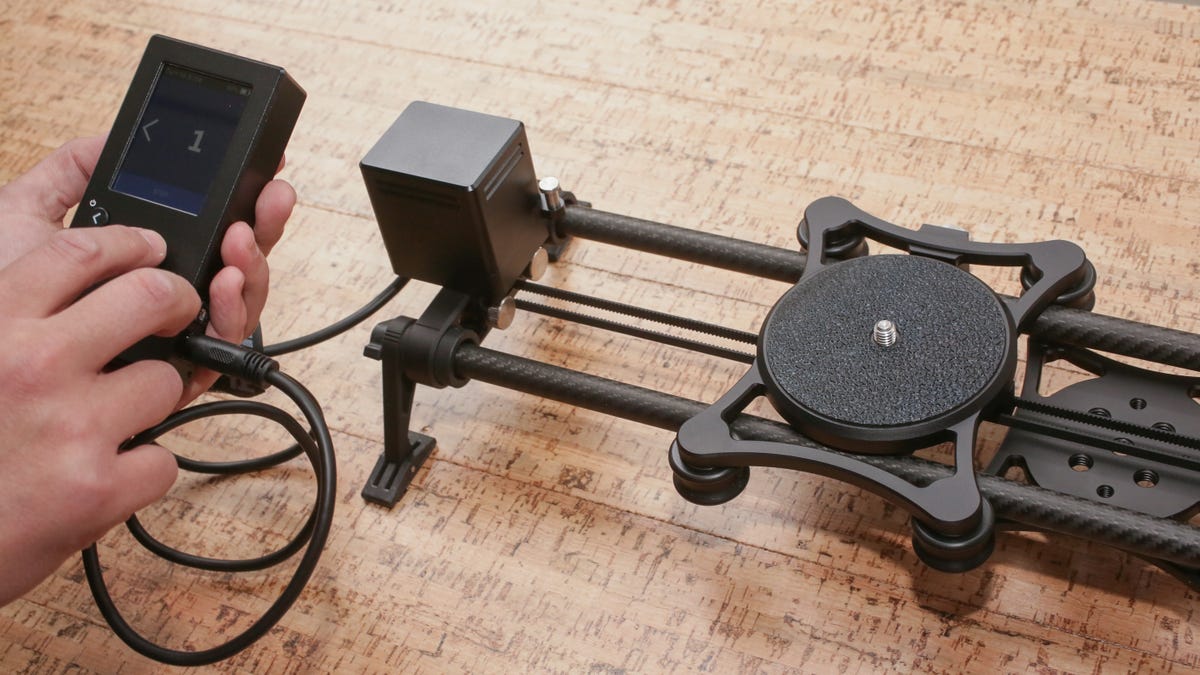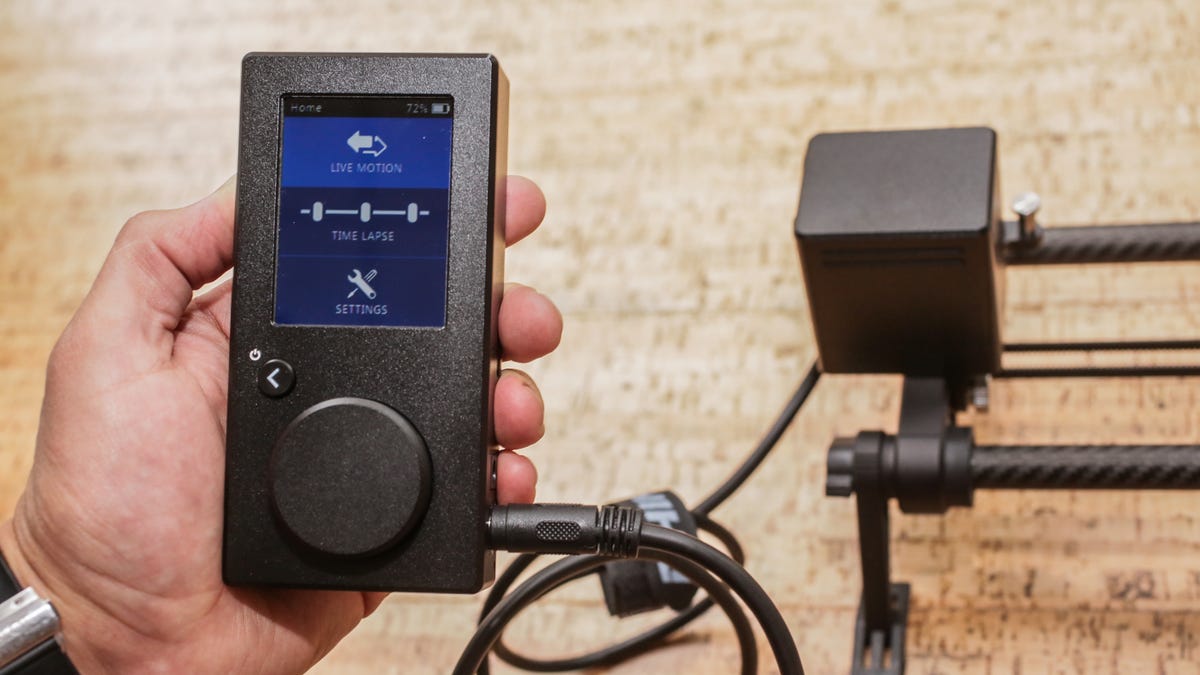
Sarah Tew/CNET
Rhino Camera Gear headed to Kickstarter in 2011 with the goal of producing an affordable, lightweight camera slider that had the performance of models that can cost well over $1,000. The end result was the Rhino Slider. The company is now back on the crowdfunding site building on that success with the Slider Evo.
Now, unless you’re into camera gear or a filmmaker, you may not know what a camera slider is, but it’s likely you’ve seen the filmmaking results of one in use. Camera sliders, at their most basic, consist of little more than a carriage on rails. Mount a camera on the carriage and slide the camera back and forth on the rails for smooth pans, pushes and pulls. It can be used for things like tracking shots where you’re sliding the camera to follow a subject or a reveal shot where the camera is panned to show the viewer more of a scene.
The Slider Evo beta unit and its optional motorized drive system, Motion, we tested was impressive. It is available in Carbon and Pro versions; the former has carbon fiber rails that support loads up to 15 pounds (6.8kg), while the latter supports up to 100 pounds (45.4kg) on its stainless steel rails. Both are available in 24-inch (61cm) and 42-inch (106.7cm) lengths. Prices for the Carbon start at $449 with the Pro set at $50 more. That converts to about £285 and £320 and AU$570 and AU$630. Adding Motion brings that up to $999 and $1,049 (about £640 and £670 or AU$1,265 and AU$1,330).
Rhino’s Slider Evo is simple, elegant motion control for your camera (pictures)






We tested the 24-inch Carbon, which weighs just 4 pounds (1.8kg), but you can easily swap the rails out if you need support for more weight and/or a longer camera move. With the legs collapsed they are flush with the slider’s end pieces due in part to its self-leveling feet that fold flat.
The feet made it easy to position the slider on the narrow ledge of a pool table and the legs are quickly adjusted thanks to markings on each leg that can be lined up with notches on the slider. If you need to reposition the slider with a camera attached, a carriage brake can be tightened with the twist of a thumbscrew to keep it from moving.


Sarah Tew/CNET
There are mounts for tripods or light stands in the middle and at both ends. Its six rollers make for effortless glides without the stickiness I’ve experienced with other sliders. Even with the smoothest slider design, though, you can still end up with some shake or jerkiness when operated by hand, and to repeatedly move one at a consistent speed takes practice. That’s where the Rhino Motion comes in.
Motion combines a small motor, a belt-and-pulley system, and a wired remote to control the movement. The motor drops down onto a peg at one end of the slider and is secured with a couple of thumbscrews. Power for the motor is supplied by a rechargeable battery inside the controller and is good for up to 8 hours of use.
The simple, straightforward interface makes it easy to get right in and start shooting with it. The power button doubles as a back button, while the knob lets you cycle through your setting options and pressing down on the knob makes your selections.


Sarah Tew/CNET
There are two main use modes at the moment: Live Motion and Time Lapse. Live Motion lets you move the carriage up and down the rails with a twist of the knob. It performs a brief calibration by moving the carriage to the end of the rails each time you use it, so that even when you have it moving at top speed it will automatically slow down to prevent it from slamming into the end of the slider.
Live Motion mode can also be used to set up specific moves for a set duration (from 5 seconds to 15 minutes) with the in and out points you want. You can also have it loop the move if you need the same shot over and over again. At the moment, though, you can’t save a move you’ve created.
The Time Lapse mode has Simple and Advanced options. Under Simple you’re able to set the travel distance, the movement direction and the time, from 1 minute to 12 hours. The Advanced option lets you control exposure with an included cable for your camera and a built-in intervalometer.


Now playing:
Watch this:
The Rhino Slider Evo and Motion motorizes your camera…
0:37
In the video above you can get an idea of the camera moves you’re capable of getting with the Evo and Motion. Behind the camera is CNET Senior Producer Mark Licea, who spent about 10 minutes with the pair before shooting — a testament to just how easy they are to setup and start using. The motor is near silent when traveling at its slowest speeds, though it does get louder as you speed up.
The slider isn’t designed to travel vertically, but it can handle inclines up to 45 degrees with 5 pounds of equipment without the belt slipping. Making it a bit more useful is a $399 accessory coming in August, the Rhino Arc. It’s basically a third rail that automatically pans your camera as it moves across the slider.
I’ve spent some time with a similar system from eMotimo, the TB3. Paired with a slider, the TB3 is more robust, allowing for programmed 3-axis moves. It’s also larger than the Rhino gear and using it isn’t as streamlined. The Rhino Evo and Motion combination is a simple, elegant solution for adding motion to your movies.
The Kickstarter campaign is coming to an end today, but Rhino is more than $270,000 over its $50,000 funding goal. Barring any production delays, backers should start to see their sliders by July.




